
LEOTECH- DUST SUPPRESSION EXPERTS
T (+39) 0439 719273
Email: info@leotech.it
LEOTECH S.r.l./Ltd
Loc. lausen 13/A I- 38050 Canal San Bovo-TN-
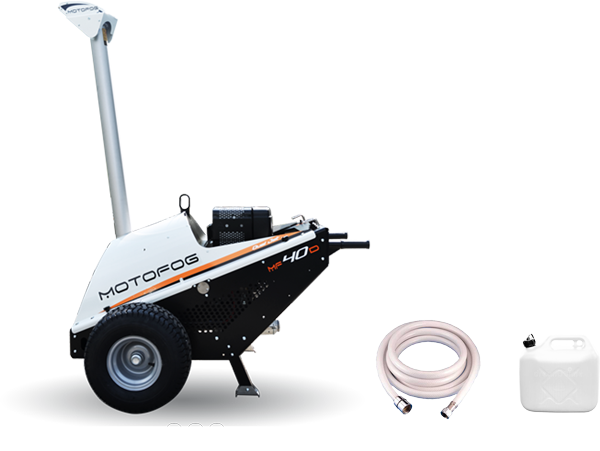
"I prepare the MOTOFOG, making sure that a suitable water supply hose (a water tank as an alternative) and a small diesel fuel tank are available: that's all I need."

"I prepare the fan cannon, luckily I could spend some extra money for the wheeled carriage option and for the onboard pump. I need to buy or rent a diesel power generating set, as on the working site I will probably not have enough electric power available to run the unit. Furthermore, I have to chose an oversized gen-set as, to handle the starting overload, it needs to have double the power stated by the fan cannon manufacturer. I also need an electric power cable extension (a long one) and a water hose. Finally I need a big diesel fuel tank for the gen-set. Now I have everything I will need on site.
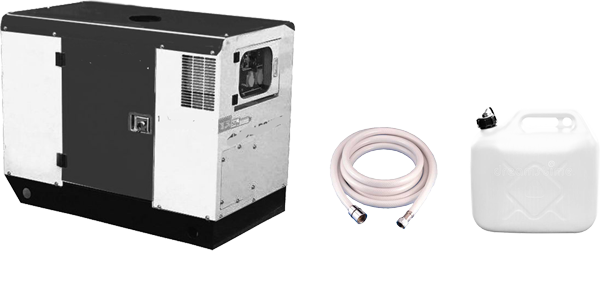
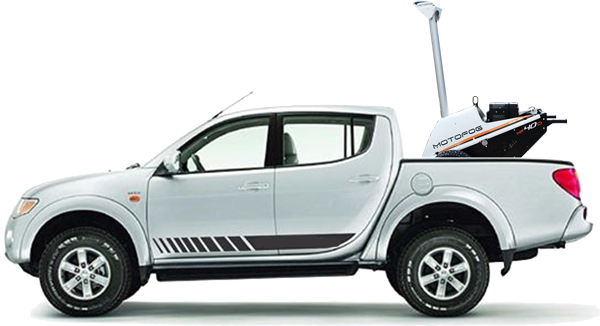
"I load the MOTOFOG on a pickup, even by hand using some loading ramps, along with the water hose and the small diesel fuel tank, then I drive to the working site."
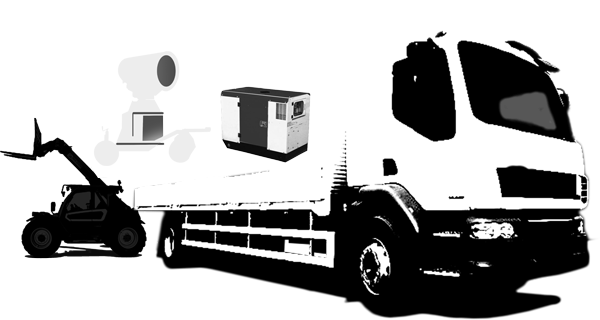
"To transport the fan cannon on site I need a truck having a suitable size, as I need to load both the fan cannon and a big gen-set. To load this machinery I will probably need a crane, either installed on the truck or a stand alone one. Then I can load the diesel fuel tank, the electric power cable extension and the water hose.
"I unload the MOTOFOG from the pickup and I easily move it by hand to its working position. MOTOFOG's big wheels and a well balanced weight allow easy movements even on bumpy terrains. I connect the water hose to the water supply pipe (to the water tank as an alternative), I refill the diesel fuel tank, then I am ready to work. I chose to work in remote mode, so I give the radio control to the operator who will then be able to control the MOTOFOG directly from his excavator (start, stop, head movements, automatic rotation). I turn the MOTOFOG on, with the related noise emissions (diesel engine, pump)."
The high pressure water jet of the MOTOFOG allows to get an optimal nebulisation, focused on the desired point. "Changing the engine speed I can adjust the water jet lenght, making it work where it is actually needed. Thanks to the Dual Jet technology I can choose between a longer and narrower jet and a shorter and wider one. As the unit has no fan blower, I can avoid creating swirls/air streams which displace the dust instead of suppressing it. I can observe this by looking at the back side of the building, opposite to the MOTOFOG: I don't see any dust moving. MOTOFOG suppresses the dust exclusively by using nebulised water, so I don't risk to raise further dust, spreading it over the working site, as it may happen with the fan units.

After a while I notice that the wind direction has changed, then the operator can move the MOTOFOG by hand to prevent it from working upwind, it only takes a couple of minutes. Operating the MOTOFOG at an average power I can work all the day long with a single fuel tank refill.
The jet of the fan cannon allows me to adequately suppress the ariborne dust, however I realize that part of the dust is non correctly suppressed but is rather pushed and displaced by the turbulent air stream generated by the turbine. This is causing me some troubles with the people living close to the working site. Furthermore, the operator is complaining about the poor visibility due to the interaction between the sunlight and the quite voluminous water jet.
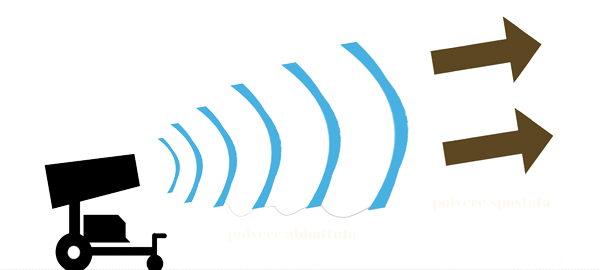
The fixed operative range makes me waste energy and water. After a while I notice that the wind direction has changed: the operator must turn the gen-set and the fan cannon off, using then an excavator to move them to a different position, to prevent the unit from working upwind. I hope that the wind does not change direction anymore, I cannot lose half an hour whenever this happens. Even the noise coming from the fan blower is very high. I notice that the fuel cost to make the gen-set run all day long is considerable, due to its power.
 English
English  Français
Français  Deutsch
Deutsch 



